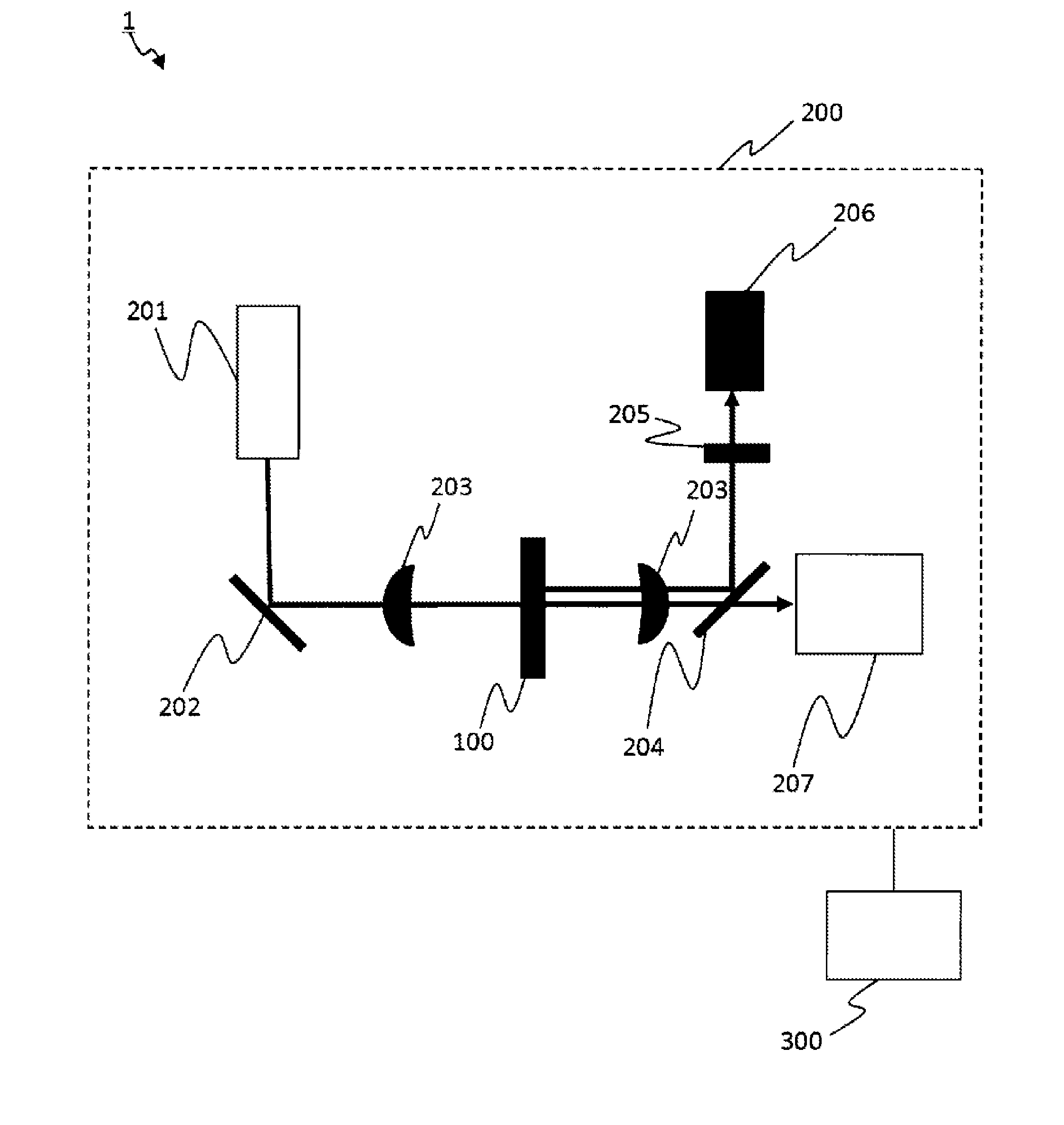Cell analysis device
a cell analysis and cell technology, applied in the field of cell analysis devices, can solve the problems of high cost, cell damage on stage, blurred image due to chromatic aberration,
- Summary
- Abstract
- Description
- Claims
- Application Information
AI Technical Summary
Benefits of technology
Problems solved by technology
Method used
Image
Examples
Embodiment Construction
[0072]Hereinafter, embodiments of the present invention will be described in more detail with reference to the drawings. The following embodiments are merely illustrative, and the present invention is not limited to these embodiments.
[0073]FIG. 1 is a conceptual view of a cell analysis device 1 in an embodiment according to the present invention.
[0074]As shown in FIG. 1, the cell analysis device 1 according to the present invention typically includes an image detection type single-cell separation / purification module 200 for acquiring image data of about 10,000 cell images per second of cells flowing in a microchannel which is formed in a substrate of a cell sorter chip 100, and purifying and recovering cell populations or cell clusters by a processing capability of 10,000 cells per second at the maximum in real time based on the result of analyzing the image information; and a recording / control section 300 for recording / analyzing various data acquired by the module 200 to control va...
PUM
 Login to View More
Login to View More Abstract
Description
Claims
Application Information
 Login to View More
Login to View More - R&D
- Intellectual Property
- Life Sciences
- Materials
- Tech Scout
- Unparalleled Data Quality
- Higher Quality Content
- 60% Fewer Hallucinations
Browse by: Latest US Patents, China's latest patents, Technical Efficacy Thesaurus, Application Domain, Technology Topic, Popular Technical Reports.
© 2025 PatSnap. All rights reserved.Legal|Privacy policy|Modern Slavery Act Transparency Statement|Sitemap|About US| Contact US: help@patsnap.com



